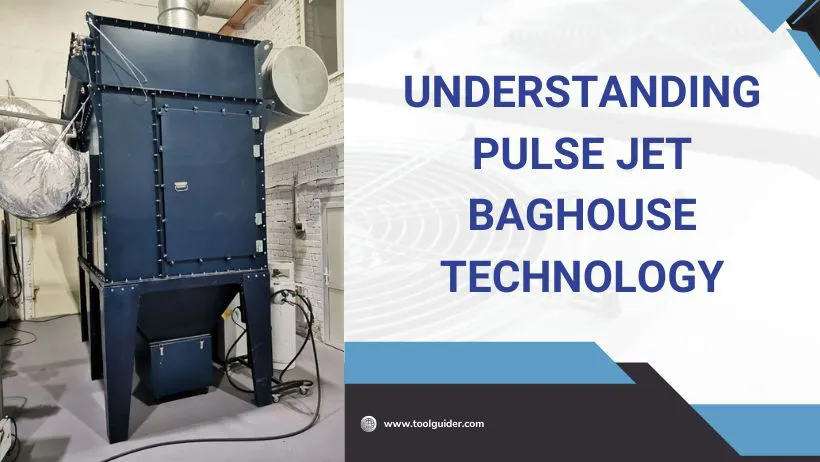Pulse jet baghouse technology represents a significant advancement in industrial air pollution control systems. This article aims to provide a comprehensive overview of this technology, its principles, operation, and applications.
Principles of Operation
Pulse jet baghouse systems function on the principle of filtration, where contaminated air passes through a series of fabric filter bags. These bags capture particulate matter while allowing clean air to pass through.
The key components of a pulse jet baghouse include filter bags, a housing or casing, a fan system, and a pulse jet cleaning mechanism.
Filter Bag Design and Material
Filter bags are the heart of a pulse jet baghouse system. They are typically made of various materials such as woven or felted fabrics, fiberglass, or other synthetic materials.
The selection of filter bag material depends on factors such as temperature, chemical composition of the particulates, and operational requirements.
Pulse Jet Cleaning Mechanism
One of the distinguishing features of pulse jet baghouse systems is their efficient cleaning mechanism. Pulse jets use compressed air pulses to dislodge accumulated dust from the filter bags.
This process involves a sequence of steps including pulse generation, distribution of pulses through manifold pipes, and the release of pulses into individual filter bags.
The sudden release of compressed air creates a shockwave that effectively cleans the filter bags, ensuring continuous and optimal filtration efficiency.
Advantages of Pulse Jet Baghouse Systems
- High Efficiency: Pulse jet systems provide high filtration efficiency, capturing even fine particulate matter effectively.
- Compact Design: These systems are compact and require relatively less space compared to other pollution control technologies.
- Versatility: Pulse jet baghouses can be adapted to various industrial applications and are suitable for a wide range of particulate types and sizes.
- Low Maintenance: With automated cleaning mechanisms, pulse jet baghouses require minimal maintenance, reducing downtime and operational costs.
- Environmental Compliance: By effectively controlling emissions, pulse jet baghouse systems help industries comply with environmental regulations and standards.
Applications
- Power Generation: Particularly in coal-fired power plants for effectively capturing fly ash and other combustion byproducts.
- Metal Processing: Foundries and metal smelting operations utilize pulse jet baghouses to capture metal particulates and dust generated during processing.
- Mining and Minerals: In mining operations, these systems are essential for controlling dust generated during crushing, screening, and conveying of ores and minerals.
- Cement Production: Cement plants utilize pulse jet baghouses to capture dust generated during various stages of production, including raw material handling, grinding, and clinker cooling.
- Chemical Manufacturing: Pulse jet baghouse systems are integral to chemical manufacturing processes for capturing particulates generated during mixing, drying, and material handling operations.
- Food Processing: In food processing facilities, these systems are used to control dust and particulate matter generated during milling, grinding, and packaging operations.
- Pharmaceutical Industry: Pulse jet baghouses play a crucial role in maintaining clean air standards in pharmaceutical manufacturing facilities, capturing particulates generated during blending, granulation, and tablet pressing processes.
- Woodworking and Furniture Manufacturing: Woodworking industries utilize these systems to control wood dust emissions from sawing, sanding, and shaping operations, ensuring worker safety and environmental compliance.
- Paper and Pulp Production: Pulse jet baghouses are employed in paper mills to capture particulates released during pulp processing, paper forming, and drying stages.
- Textile Industry: Textile manufacturing facilities use these systems to control lint and fiber particulates generated during spinning, weaving, and finishing processes.
- In each of these industries, pulse jet baghouse technology plays a vital role in maintaining clean air standards, protecting the environment, and ensuring the health and safety of workers.
Torch-Air’s expertise extends beyond the aforementioned industries to encompass a wide range of applications. Whether you are in the pharmaceutical, semiconductor, automotive, or any other industry requiring efficient air pollution control solutions, our pulse jet baghouse systems are designed to meet your specific needs.
For personalized consultation and assistance in selecting the ideal solution for your air filtration requirements, feel free to reach out to us without any hesitation. Your satisfaction with our products and services is our top priority.
Conclusion
Pulse jet baghouse technology offers an efficient and reliable solution for controlling air pollution in various industrial processes. With its advanced filtration capabilities, compact design, and low maintenance requirements, pulse jet baghouse systems continue to be a preferred choice for industries striving for environmental sustainability and regulatory compliance.

I love all things tech, and I wear many hats – tech lover, business starter, digital marketer, and blogger. I know the ins and outs of Digital Marketing, SEO, SEM, SMM, and how to generate leads. My goal? Making things simple for you with clear guides and reviews. I stumbled upon WordPress while creating my first business site, and I fell in love with it right away. When I’m not building websites, creating content, or boosting clients’ online efforts, I’m focused on staying healthy, hanging out with family, and exploring the world. Connect with me on Facebook, Twitter, Linkedin, or read my complete biography.

